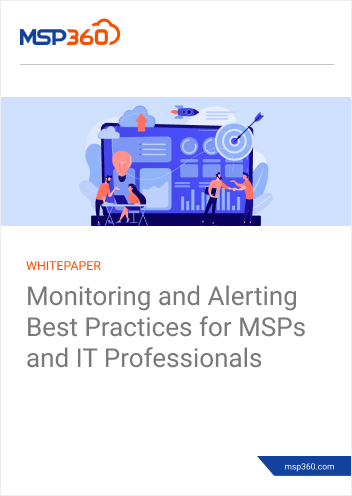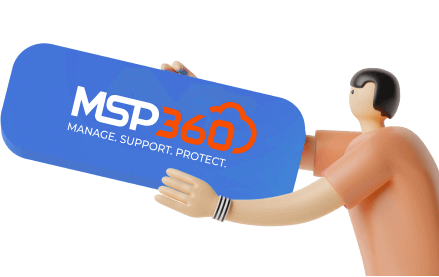Monitoring and Alerting With MSP360 RMM
Simple and reliable monitoring and alerting solution that helps you solve issues before they occur.

Identify Current And Potential Issues Faster
Ensure System Uptime
Make Data-Backed Decisions
Get the Most Out of Monitoring And Alerts
Monitoring and alerting are a core part of your workflow. Monitoring allows you to gather the data you need in order to track the availability and performance of critical resources. Alerting notifies you when monitoring data changes in a way that may require your attention.
Improve the value of the managed services you offer, and streamline your internal operations by optimizing the way you approach monitoring and alerting.

Simple and Reliable Remote Monitoring and Alerting
Make Your Monitoring and Alerting Routines Seamless With MSP360 RMM
Handle Issues Faster
Fine-tuned monitoring and alerting practices help you to proactively detect and resolve performance problems with IT resources
Ensure System’s Availability
Downtime usually leads to huge losses in revenue. A proper monitoring setup and timely alerts allow for early identification of issues and stable uptime
Collect Actionable Metrics
Data accuracy is the first step in the incident resolution process. With real-time monitoring, you can rapidly take appropriate actions and improve your overall workflow
Enhance System Performance
Peculiar faults that impact system performance can’t be detected manually. Locate anomalous patterns faster and eliminate them to boost performance
Enable Efficient Resource Management
Easily establish a baseline that reflects the normal operating state of your systems, and use this information for data-driven SLAs and efficient capacity planning
Establish System Limits
Analyze normal behavior and predict issues during peak hours faster to proactively mitigate them and utilize resources properly
Frequently Asked Questions About Monitoring and Alerting
Monitoring and Alerting With MSP360 RMM









